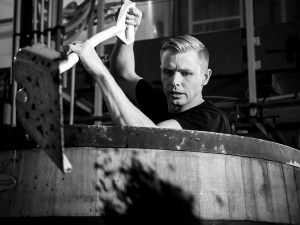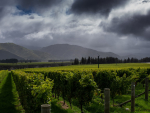A state-of-the-art wastewater treatment system, inhouse upcycling of perlite and lees waste, and the spreading of grape marc and biosolids to vineyards, are just handful of the innovations rolled out at Rose Family Estate in recent years.
And every success and learning has been shared with Marlborough’s wider winemaking community, through open days and one-on-one discussions, says Chief Winemaker Nick Entwistle, who is also on Marlborough’s Circular Wine Group.
“We don’t see it as a competitive advantage. If we help everybody up to reach the levels we aspire to, then the whole of the industry will be better off.”
Social responsibility is one of the pillars of Rose Family Estate’s sustainability policy, and that includes the betterment of the local community, says Nick, who entered the company in this year’s Port Marlborough – Marlborough Environment Awards, as another way of sharing insights.
Company founders Phil and Chris Rose were pioneers in the region’s wine industry, and “the second generation has that thirst to find their pioneering opportunity”, Nick says.
Leading environmental initiatives and innovations is part of that, including as one of the first companies to be certified as carbon neutral, from 2006 to 2012.
The Rose family have long been committed to planting riparian areas on their vineyards, most recently on a new block near the Grovetown Lagoon, and were early adopters of green spreading of grape marc in the vineyard daily during vintage.
They recently purchased equipment that selects grapes during machine harvesting, leaving stems, leaves and canes in the vineyard, thereby reducing their marc production.
In the 2024 harvest the winery diverted 50,000 litres of fermentation lees away from the landfill, by pumping perlite and lees waste into geobags – permeable plastic bags – that sit in a bund where the liquid drains.
The liquid goes through the wastewater treatment system and the dry residue is spread to the vineyard floor of specific blocks, returning 3.75 tonnes of potassium to the soil annually.
Meanwhile biosolids from wastewater settling tanks, which were historically sent to council oxidation ponds, are also separated from wastewater using geobags, with the solids combined with grape marc and returned to the vineyard, with fluid going through the treatment system before being applied to a 4-hectare effluent distribution field, diverting 130,000 litres of biosolids from the oxidation ponds each year.
Judges in the awards applauded the company ethos of continuous improvement, the ability to recognise a problem, then commit to tackling it, and “the desire to share knowledge as well as learn from others”.












